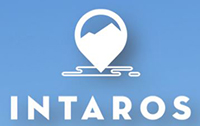| Number | Name | Description |
|---|---|---|
| D3.16 | Synthesis and technical recommendations | The document provides a summary of sensors, platforms, and observing systems implemented during INTAROS field campaigns and presents technical recommendations based on experience gained from operating these components for collecting in situ observations during the project. The contents include: |
| D3.6 | First implementation and data: Greenland | Describes the first implementation and results of use of INTAROS WP3 (Task 3.1) for the Coastal Greenland reference site, which is identified as a key location for freshwater output from the Greenland ice sheet to the ocean. |
| D3.7 | First implementation and data: North of Svalbard | The first implementation was deployed successfully in August 2018 using the Coast Guard icebreaker KV Svalbard and retrieved with KV Svalbard in August/September and with the research icebreaker RV Kronprins Håkon in September and November 2019. All recovered instrument and sensor provided full data return therefore a full annual cycle of multidisciplinary data was obtained. |
| D3.8 | First implementation and data: Fram Strait | The state-of-the-art in the implementation of new observing systems developed within the INTAROS project as well as the optimization of existing systems in Fram Strait. In addition, it reports on results from the observing systems and describes ways for the delivery of data retrieved by these systems |
| D3.9 | First implementation and data: Atmosphere and land | Focuses on (a) atmospheric observation of the main greenhouse gases (CO2 and CH4) using ground, mobile and airborne eddy covariance observations to deter-mine the atmospheric concentrations and fluxes in North slope of Alaska and Sweden; (b) trace gases monitoring of N2O, SF6, CO, O2/N2 using a flask sampler for the automated collection of air samples under standardized conditions; (c) effects… |
| D4.1 | Community based monitoring programmes in the Arctic: Capabilities, good practice and Challenges | Arctic people live in and observe the Arctic environment year-round. Intimate knowledge of the environment and environmental changes is fundamental to the survival of these people who frequently depend on natural resources for their livelihood. This report presents a review of the capabilities, good practices, opportunities and barriers of community-based environment monitoring programmes in… |
| D4.2 | Library with tools for cross-fertilizing knowledge | Community based environment monitoring has considerable potential for improving the understanding of environmental changes as well as for improving the management of natural resources. Together with the organizers of six community based environment monitoring programs, the INTAROS project has developed a library of ‘good practice’ manuals in community based monitoring that could serve as tools… |
| D4.3 | Lessons learned on community-based observing parameters | A series of people-based observing activities have been piloted in Disko Bay, Greenland, and in Svalbard. Our aims were to examine the feasibility of specific community-based and citizen science observing and networking activities and, at the same time, to assess their potential for wider use. We assessed the observing activities against six criteria: (1) the cost, (2) the need for expertise… |
| D4.4 | Community-based observations from two focal communities | Community-based observations from two focal communities CONNECTING ARCTIC COMMUNITY-BASED AND CITIZEN SCIENCE OBSERVATIONS WITH EXISTING RECOGNIZED DATABASES Community-based and citizen science observations in the Arctic do not only have the potential to inform management decisions at local or provincial and national levels. The observations can also shed light on changes in the… |
| D5.10 | Geostatistical Library V2 | The work effort in Task 5.4 has been to design, develop and distribute a Geostatistical Library to be used as a scientific toolbox in some different data analysis workflows (e.g. for the iAOS showcase applications). |
